ПРЕДПОСЫЛКИ ДЛЯ УСТОЙЧИВОГО РАЗВИТИЯ САДОВОДСТВА В КРЫМУ
ПРЕДПОСЫЛКИ ДЛЯ УСТОЙЧИВОГО РАЗВИТИЯ САДОВОДСТВА В КРЫМУ
Аннотация
Данная статья посвящена предпосылкам устойчивого развития сельского хозяйства в Республике Крым. Целью статьи является изучение климатических и сельскохозяйственных особенностей, а также природно-ресурсного потенциала Крыма, для расширения площади садов и повышения экономической стабильности в аграрном секторе. Статья содержит данные о динамике площадей, занятых под сельское хозяйство в разное время, а также оценку их современного состояния, обзор географических почвенных зон, состава почв и климатических особенностей региона. Выявлено комплексное влияние факторов на доходность сельского хозяйства в Республике Крым. В результате исследования получена информация о стабильности размещения различных сортов на территории Республики Крым и освоении ресурса – посевных площадей. Большое значение имеют программы, которые реализуются благодаря политической и правовой поддержке государства и Правительства Крыма. Определена зависимость пользования почвой от климата региона. Проведенные исследования выявили агрономически значимые почвенно-климатические факторы, влияющие на плодородие и урожайность сельскохозяйственных культур. Выявлена необходимость перехода на новые, адаптивные технологии. Обоснована необходимость увеличения инвестиций в аграрный сектор экономики региона.
1. Introduction
The Heads of State participating in the UN Summit on Sustainable Development in New York on September 25, 2015 approved 17 goals, 169 targets and 230 indicators that together make up the Sustainable Development Goals (SDGs).
"Transforming our World: The 2030 Agenda for Sustainable Development" is relevant for developed and developing countries. Aspects of sustainable development are considered in the economic and social sphere. They are universal in nature, global and universally applicable. Achieving the Goals will allow humanity to end poverty, hunger and sustainably manage natural resources.
The Sustainable Development Goals are interrelated and complement each other. Their goal is the complete elimination of the causes of global problems and a course towards economic, political and environmental sustainable development. The Agenda adopted for the period up to 2030 proposes to consider food and agriculture as the key to sustainable development. Thanks to one of the goals (SDG2), it will be possible to solve one of the important problems of poor countries – hunger. In order for this goal to be achieved, it is necessary to strictly adhere to the programs for the sustainable development of agriculture. The Food and Agriculture Organization of the United Nations (FAO) has experience and knowledge, supports the development and development of programs aimed at ridding the world's population of hunger and poverty .
One of the causes of hunger is the decline in food security due to the reduction of available land for agricultural purposes.
Crimea is a region that has a rich natural potential for the effective development of horticulture. But in Crimea, the structure and quality of the soil suitable for growing crops are deteriorating due to the negative influence of natural and anthropogenic factors. In order to increase soil fertility and the cost-effective development of the agricultural complex, it is necessary to practically introduce scientifically based technologies to increase crop yields. To fulfill the objectives of SDG 2, measures are being implemented in the republic to optimize the productivity of the agricultural complex.
2. Research results and discussion
2.1. Political and legal support of crop production in Crimea
The analysis of information on the calculation of the index of orientation of public spending on agriculture in the world, published by FAO (Agriculture Orientation Index for Government Expenditure in the world) for the period 2001–2019, indicates a trend of growth of the indicator from 2015 to 2019 in the Russian Federation (Figure 1). Analyzing the data, it can be noted that the maximum indicators are observed in 2010, 2013 and 2018. In 2002, the minimum index of state financing of agriculture was noted in the Russian Federation. The "failure" – the minimum indicator of the indicator of government spending on agriculture is 2007.
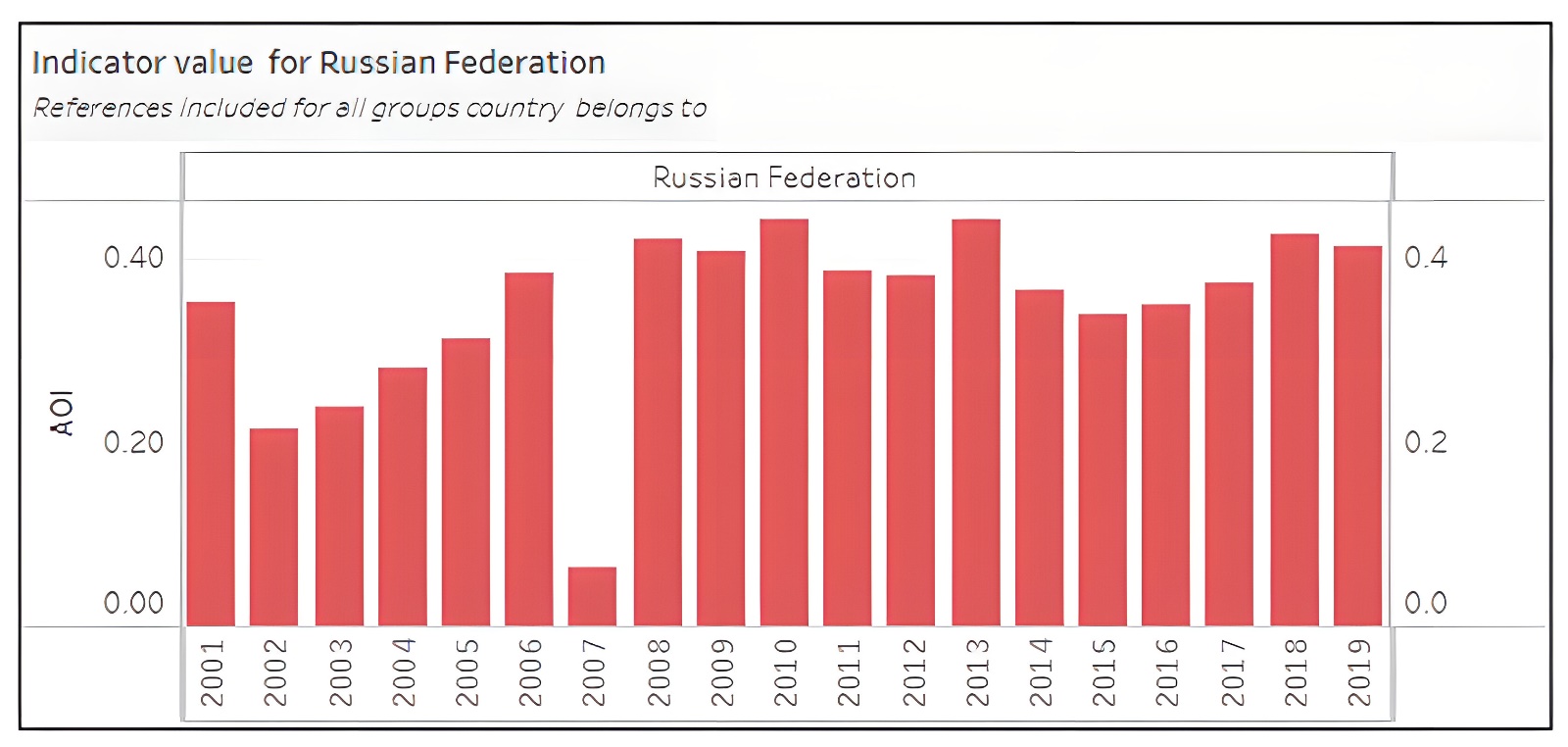
Figure 1 - The value of the indicator of government spending on agriculture for the Russian Federation
The program for the development of the agro-industrial complex in the territory of the Republic of Crimea has been developed until 2025. It includes several priority areas that should ensure the development of sustainable food production systems in Crimea by 2030. At the same time, much attention is paid to the study of soil and climatic features of the region and agricultural technology of agricultural crops. For the implementation of the event "Monitoring of agricultural lands", held in Crimea in 2020, it was provided at the expense of the budget of the Republic of Crimea – 900.0 thousand rubles. The funds were fully disbursed .
There is an active search for the characteristics and capabilities of agricultural crops to adapt to climate change, extreme weather conditions, drought, floods and other natural disasters. The scientific and practical direction of activity on search of methods of improvement of quality of the soil develops. The region is actively working on the uprooting of old plantings (Table 1) and the introduction of arable areas into agriculture.
Table 1 - The area of gardens in the Republic of Crimea for the future until 2025
Districts | Total area under the gardens,hectares | The volume of uprooting, hectares (with budget support) |
Planting volume, hectares | The total area under the gardens by 2025 | ||||
2015 | 2016- 2020 | 2021- 2025 | 2015 | 2016- 2020 | 2021- 2025 | |||
Bakhchisarai | 5474 | 50 | 400 | 400 | 100 | 600 | 600 | 5924 |
Belogorsky | 3130 | 20 | 300 | 200 | 100 | 400 | 300 | 3410 |
Dzhankoysky | 2576 | - | 300 | 300 | - | 200 | 500 | 2676 |
Kirovsky | 3102 | - | 100 | 160 | - | 200 | 300 | 3342 |
Krasnogvardeysky | 4188 | 100 | 400 | 500 | 100 | 600 | 500 | 4388 |
Krasnoperekopsky | 615 | - | - | - | - | 50 | 100 | 765 |
Leninsky | 1145 | - | - | - | - | 100 | 100 | 1345 |
Nizhnegorsky | 3030 | 100 | 300 | 400 | 50 | 400 | 500 | 3180 |
Pervomaisky | 1487 | - | - | 100 | - | 100 | 300 | 1787 |
Razdolnensky | 645 | - | - | 20 | - | - | 100 | 725 |
Sakskiy | 2665 | - | 200 | 100 | 50 | 100 | 400 | 2915 |
Simferopol | 5141 | 30 | 200 | 300 | 50 | 400 | 600 | 5661 |
Sovetsky | 1601 | - | - | 100 | - | 100 | 100 | 1701 |
Chernomorsky | 989 | - | - | 100 | 50 | 50 | 200 | 1189 |
Other | 3500 | - | - | 120 | - | 100 | 400 | 3880 |
Total for the Republi of Crimea | 39000 | 300 | 2200 | 2800 | 500 | 3400 | 5000 | 43000 |
Table 1 shows that in general, with budget support, the total amount of uprooting, amounting to 300 hectares in 2015, was increased to 2200 hectares in 2016-2020 and to 2800 hectares in 2021-2025. In general, the volume of planting, amounting to about 500 hectares in 2015, with support from the state budget, was increased to 3400 hectares in 2016-2020 and up to 5000 hectares will be increased in the period 2021-2025.
According to Table 1, if 300 hectares in 2015 to 560 hectares in 2021-2025 are subject to uprooting annually, then the area occupied by new plantings will increase from 500 hectares in 2015 to 1000 hectares in 2021-2025. The areas planned for the largest area of gardens are: Bakhchisarai (5924 hectares), Simferopol (5661 hectares), Krasnogvardeysky (4388 hectares), Belogorsky (3410 hectares) and Kirovsky (3342 hectares). The total area of the Crimean gardens should be increased from 39000 to 43000 hectares .
Scientists of the Nikitsky Botanical Garden in 2015 developed a special program for the development of horticulture in the Republic of Crimea for the period 2015-2025. The presentation of the program was held at the Council of Ministers of Crimea and approved by the Ministry of Agriculture in the same year. The program was developed in order to solve the problem of negative growth rates of plantings that were registered in the period 2011-2014. (Figure 2).
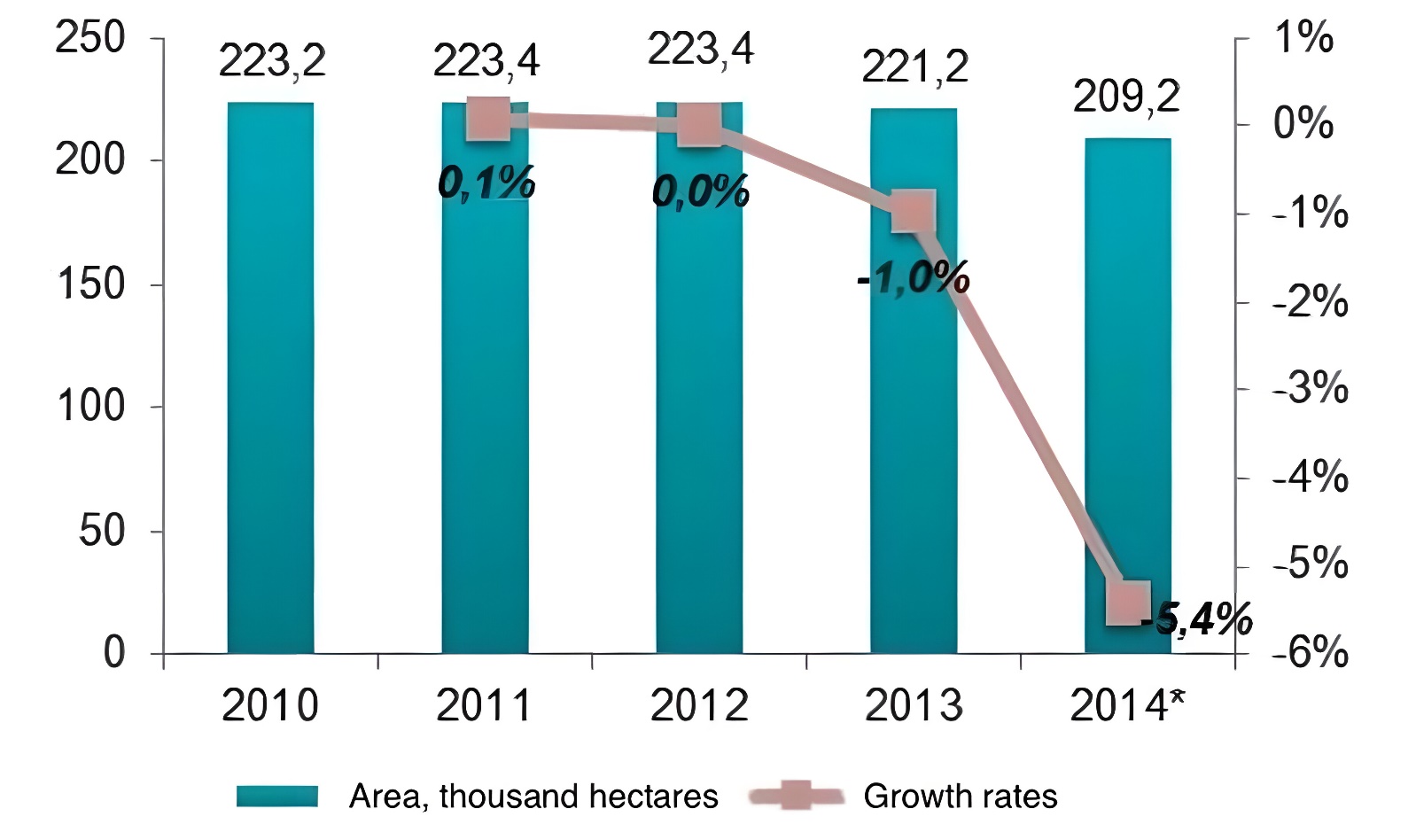
Figure 2 - Areas of plantings (dynamics) for berries and fruits in fertile age (Ukraine), in thousand hectares (excluding the Republic of Kazakhstan and Sevastopol)
– increase in fruit harvest from 116 thousand tons in 2015 to 507 thousand tons in 2025;
– achievement of 300 kg/ha in 2025;
– construction of a special complex of biotechnologies worth about 300 million rubles;
– implementation of 183 hectares of state nurseries in the amount of 231 million rubles;
– organization of a fruit storage facility with a volume of 160 thousand tons in the amount of 15 billion rubles;
– increase in the volume of processing to 150 thousand tons in the amount of 4 billion rubles.
In this regard, the total costs of 37.54 billion rubles were calculated.
2.2. Soils of the Crimea
The diverse relief and composition of soils, as well as climatic conditions combined with anthropogenic activity, have determined the exclusivity of the soil cover of the Crimea. There are several soil groups in Crimea (Figure 3; Table 2). Morphological features of soils are determined by the processes of their genesis, climatic zonal features and human activity. These features are taken into account in their economic use .
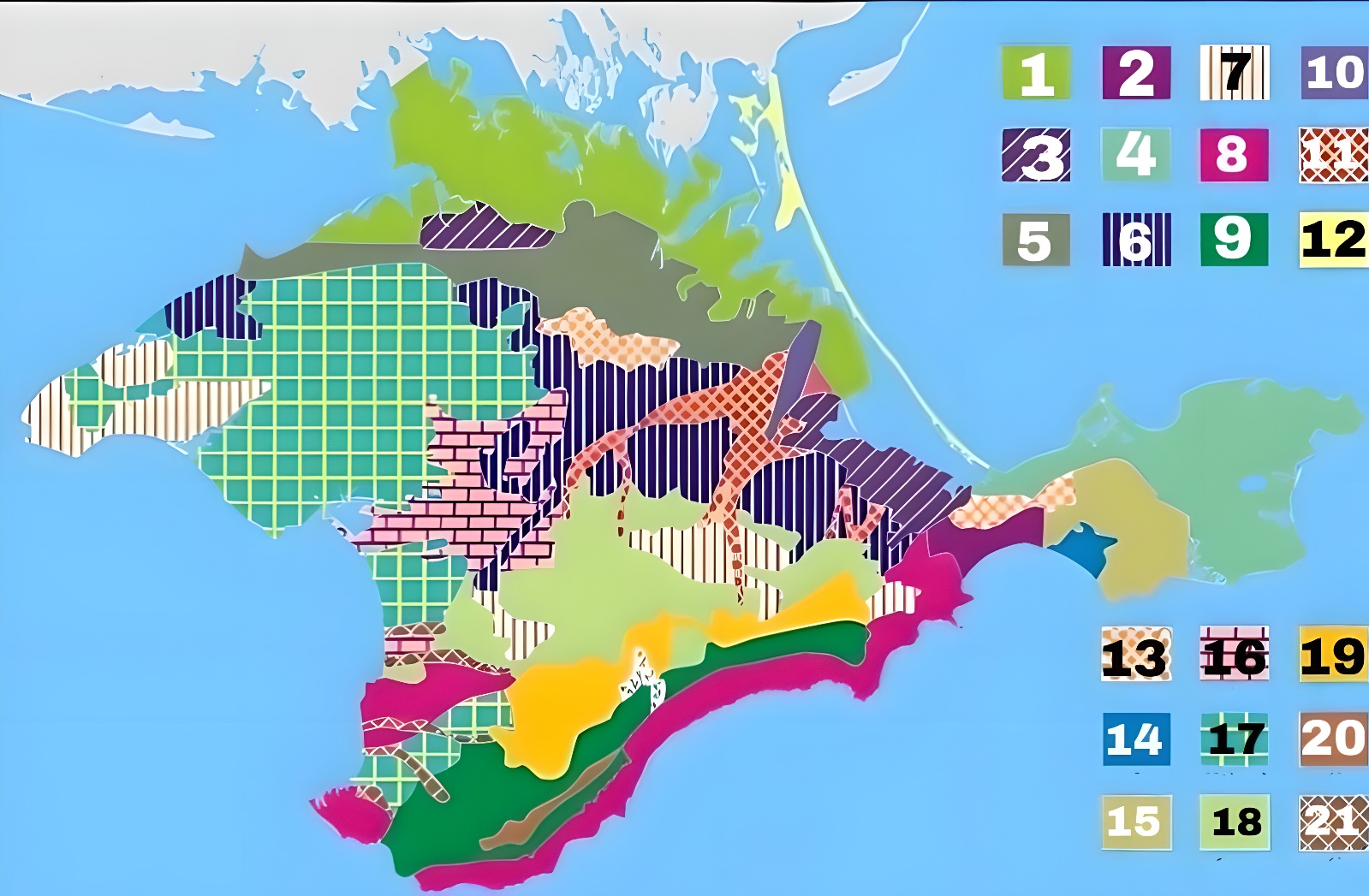
Figure 3 - Soils of the Republic of Crimea (according to I.Ya. Polovetsky and P.G. Gusev)
Note: 1 – salt marshes; 2 – salt marshes on loess-like sediments; 3 – chestnut-meadow saline; 4 – meadow-chestnut saline; 5 – dark chestnut saline; 6 – southern chernozems slightly and medium saline; 7 – saline chernozems on Sarmatian and Maikop clays; 8 – dark chestnut saline on Maikop clays; 9 – solonets on Maikop clays; 10 – southern chernozems; 11 – southern micellar-carbonate chernozems; 12 – southern micellar-carbonate chernozems on red-brown clays; 13 – carbonate chernozems on eluvia and deluvia of carbonate rocks; 14 – sod-carbonate; 15 – brown; 16 – brown mountain forest; 17 – brown mountain settled; 18 – mountain meadow; 19 – alluvial meadow and chernozem meadow; 20 – chernozem meadow saline; 21 – meadow-chernozem; 22 – sod-sandy soils
Table 2 - Soil groups by the thickness of the soil profile and root layer. Fertility for perennial plantings
Groups of soils according to the depth of the clastic layer of dense rocks | Fertility, % | |
Gardens | Vineyards | |
Dense rocks of different chemical composition deeper than 150 cm | 100 | |
Carbonate-free dense rocks (shales, sandstones, conglomerates) at a depth of 100-150 cm | 50-100 | 100 |
Carbonate dense rocks (limestones, marls) from a depth of 100-150 cm | 50-80 | 70-80 |
Carbonate-free dense rocks from a depth of 50-100 cm | Unsuitable | 50 |
Carbonate dense rocks from a depth of 50-100 cm | ||
Various dense rocks from a depth of 30-50 cm | Unsuitable | |
The soils of the Crimea require careful treatment and thoughtful measures of rational use. It is necessary to develop measures that will allow not only to take care of the soil fund, but also to restore it. For example, taking into account landscape features, it is necessary to increase the planting of forest belts on plains and mountain slopes. Due to the peculiarities of the water regime, it is necessary to create a scientifically based drainage system in the fields of steppe areas. To reduce erosion processes, modern scientific achievements in this field should be analyzed and actively implemented. Given the high degree of soil salinization in various zones, it is necessary to apply agricultural techniques to reduce the intake of salts into soil horizons. Fertilizers are of great importance for increasing yields. Fertilization should be based on scientifically sound agricultural techniques for certain varieties and crops of agricultural plants, taking into account the characteristics of the soil horizon.
2.3. Climatic features of the Crimea
The conditions of formation of the Crimean soils are due to the influence of solar radiation, rock and formation processes. Due to the wind, solid soil particles, including salt, move through the atmosphere. The formation of soil due to climate is direct and indirect, affecting: soil formation rocks, flora, fauna and groundwater. Directly due to the climate, the thermal and water regime of the soil is being formed.
The intensity of chemical reactions largely depends on the temperature of the soil. The reaction rate increases 2-3 times with an increase in temperature for every 10 ° C. In the physico-geographical regions of the Crimea with different temperature conditions, respectively, the rates of chemical reactions in soils are also different. Precipitation is an important source of moisture for the soil. The formation of soils is also affected by the uneven distribution of precipitation and the intensity of their precipitation throughout the year (Figure 4) .
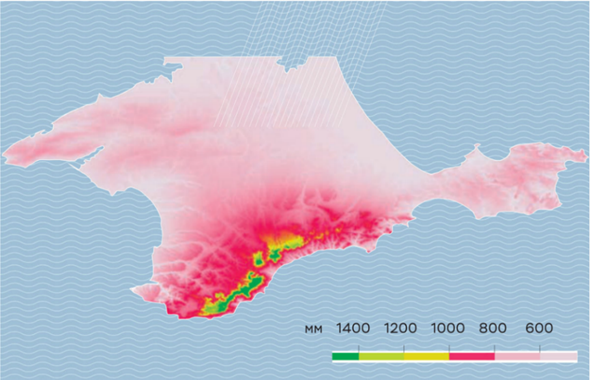
Figure 4 - Map of the distribution of the annual precipitation rate on the territory of the Crimean Peninsula
The conducted research has revealed soil and climatic factors affecting the efficiency of agriculture in the region (Table 3) .
Table 3 - Dependence of soil use for fruit plantations on climatic conditions
Capacity of soils, cm | Climatic conditions | ||
Arid | Moderately moist | Wet | |
Slopes of more than 7° on any rocks, elevated plains and gentle slopes of less than 7° with water-permeable rocks | |||
0-20 | Not suitable for use | ||
20-40 | It can be used for apricot, cherry, plum | Without irrigation – apricot and cherry, with irrigation – all stone | All fruit plantations |
40-60 | It can be used for apricot, and for irrigation – peach, plum, cherry | ||
60-100 | Suitable with irrigation for stone and undemanding varieties of apple trees | Without irrigation – cherries, apricots, plums, cherries, with irrigation – all stone and resistant varieties of apple trees | |
100-150 | Weight of the breed under irrigation, without irrigation – apricot, cherry | All fruit plantations | On the plains, the assessment of soils is reduced due to the resulting waterlogging |
150-200 | Without irrigation – all fruit breeds with limited crown volume in seed varieties | On plains and very gentle slopes | |
Soil resources and climatic conditions of the peninsula make it possible to grow many crops of the temperate and subtropical zones. For example, the cultivation of lavender, sage, rose has long acquired important industrial importance. The main directions of crop production: grain and vegetable crops; horticulture and viticulture.
Due to the climatic zonality of the peninsula, it is necessary to conduct research on the influence of climatic factors on the cultivation of certain varieties of aracultures (Table 4). If we sum up the temperatures in the flat Crimea, then in a year together they will amount to 3300-3600 degrees, and on the Southern coast of Crimea they will exceed 4000 degrees in a year. The frost-free period of the flat Crimea lasts 170-200 days, on the Southern coast – 240-270 days. With an abundance of heat and light, there is a lack of soil moisture. In most of the Crimea, the average annual precipitation is 300-400 mm. If you look at dry years, precipitation is halved. This suggests that in these areas there is an acute question of the need to water the fields for agriculture .
Table 4 - Possibilities of using soils of various capacities for fruit plantations
Capacity of soils and soils, cm | Climatic conditions | ||
Arid | Moderately moist | Wet | |
Plains and gentle slopes less than 7 ° with soils that have formed on waterproof rocks | |||
0-60 | Not suitable for use | ||
60-100 | Apricot and cherry planting is possible | Draining under the condition of discharge of excess water | Draining under the condition of a drainage device |
100-150 | All fruit varieties except winter seed varieties | Plum and summer apple varieties in the drainage device | |
150-200 | All breeds of stone and winter varieties of sunflower seeds with a limited volume of crowns | Plum and summer apple varieties in the drainage device | |
2.4. Acreage resources
Below are data on the state of sown areas of agricultural crops for the period 1990-1999 and for the period 2014-2015, respectively (Table 5; Table 6).
Table 5 - Sown area of the main agricultural crops for the period 1990-1999
| 1990 | 1991 | 1995 | 1996 | 1998 | 1999 |
Total acreage, hectares | 1198.8 | 1208.9 | 1138.3 | 1096.0 | 948.0 | 941.4 |
Wheat, hectares | 269.7 | 267.5 | 253.7 | 270.9 | 276.0 | 269.5 |
Barley, hectares | 176.1 | 161.3 | 133.1 | 83.9 | 93.4 | 84.9 |
Corn, hectares | 18.2 | 20.7 | 6.9 | 2.1 | 4.7 | 2.8 |
Sunflower, hectares | 48.9 | 46.7 | 54.8 | 69.8 | 70.5 | 96.6 |
Soybeans, hectares | 10.1 | 9.8 | 1.3 | 1.4 | 1.4 | 1.9 |
Potatoes, hectares | 14.8 | 17.0 | 27.1 | 23.1 | 21.6 | 22.4 |
Outdoor vegetables, hectares | 20.2 | 22.0 | 24.8 | 22.1 | 20.3 | 23.0 |
Table 6 - Sown area of the main agricultural crops for the period 2014-2015
| 2014 | 2015 |
The entire acreage, hectares | 731.8 | 711 |
Wheat, hectares | 274.5 | 276.4 |
Barley, hectares | 198.6 | 198.1 |
Corn, hectares | 3.2 | 1.0 |
Sunflower, hectares | 83.8 | 82.7 |
Soybeans, hectares | 4.1 | 0.7 |
Potatoes, hectares | 0.3 | 0.7 |
Outdoor vegetables | 0.7 | 1.9 |
The first place in the structure of sown areas of the Republic of Crimea is occupied by wheat (38.9% of all sown areas of the region), followed by barley (27.9%), sunflower (11.6%), leguminous crops (3.0%).
The sown area occupied by wheat (winter and spring), from 1990 to the beginning of 1999, gradually fell. This can be explained by negative factors caused by the unstable political situation in the country. Since 2000, the area sown with wheat began to increase until 2015. Igor Budanov, Chairman of the Committee on Agrarian Policy, Ecology and Natural Resources of the State Council of the Republic of Crimea, noted that the grain harvest growth was primarily influenced by seeds imported from the mainland of Russia, used during planting.
In turn, the head of the analytical center "SovEcon" Andrey Sizov noted that the increase in the wheat harvest in the Crimea occurred due to a change in the structure of crops.
"If earlier the Ukrainian Crimea focused on rice production and was the rice granary of Ukraine, now in Crimea rice is practically abandoned. Rice is the most moisture—loving crop, and it takes a lot of moisture to produce it.
There are problems with irrigation in Crimea. In this regard, in recent years, there have been structural changes in crops in Crimea. They focus on winter wheat, winter planting is sufficient to get a high yield. This structural maneuver led to the fact that the overall grain yield and production growth turned out to be higher. But the refusal of rice in the Crimea does not particularly affect the Russian rice balance, because in Russia the main granary of rice is the Krasnodar Territory, which gives about 90% of all rice," the expert said.
Sizov also stressed that Crimea is now more than provided with grain.
As for corn, its acreage has been declining since 1992, i.e. after the collapse of the Soviet Union, and continues to decline catastrophically. According to forecasts of the Agriculture Service of foreign countries, the production of grain crops will decrease, as the potential areas for grain are occupied by sunflower and soybeans, which does not allow farmers to expand the territory for planting grain.
If we analyze the data on the acreage of sunflower, we can see that until 2014 the area steadily increased, and after the annexation of Crimea to the Russian Federation – began to decline. This is closely related to the problem of irrigation. Sunflower is a moisture-loving culture and also severely depleting the soil. Its use in crop rotation, even in less arid regions than Crimea, is quite limited.
Therefore, in order to increase the level of water supply to Crimea, it makes sense to abandon the cultivation of rice, soybeans and corn. The fact is that Crimea geologically and historically belongs to the least water-rich regions of the former USSR. The peculiarity of the local water supply is almost complete (by 82%, according to the Ministry of Regional Development of the Russian Federation) dependence on the North Crimean Canal (CCM) connecting the main channel of the Dnieper with the peninsula.
Since mid-April 2014, Ukraine has stopped supplying water to Crimea. As a result, the rice harvest was lost. Meanwhile, it was possible to maintain water supply in the housing and communal services structure due to the water supply in the storages.
Now the leadership of the Crimea, together with the Russian authorities, is working on several versions of alternative water supply. It is planned that within a few years Crimea will switch to a rational water supply scheme, which involves the construction of new water pipelines, reservoirs and wells. In addition, the Crimean authorities are ready to stimulate agricultural enterprises, which will switch to a drip irrigation system as soon as possible.
For the first time in 2022, Crimea was allocated state support in the amount of about 42.5 million rubles for the production of potatoes and vegetable crops. This was reported in the press service of Krymstat with reference to the Ministry of Agriculture of the Republic of Crimea.
In addition, according to the results of the agricultural micro-census of 2021, it turned out that agricultural organizations in the Crimea increased the area for potatoes compared to the data of the All-Russian Agricultural Census of 2015.
Farms have increased the area by 1.3 times, and individual entrepreneurs — by 1.8 times.
Nevertheless, the total sown area for agricultural crops in the Republic of Crimea in 2015 amounted to 711 thousand hectares, while in 2014 – 731.8 thousand hectares. This indicates a downward trend in acreage. One of the measures that will increase the area of land is the uprooting of unproductive perennial plantings. It was planned to allocate 2889.88 thousand rubles for the implementation of this event in 2016, including 2745.386 thousand rubles from the federal budget, and 144494 thousand rubles from the budget of the Republic of Crimea .
Financing of the program as of 2016 amounted to 2889.88 thousand rubles (100% of the plan), including from the federal budget – 2745.386 thousand rubles (100% of the plan), from the budget of the Republic of Crimea – 144494 thousand rubles (100% of the plan). During the year, unproductive perennial plantings were uprooted on an area of 774.1 thousand hectares (Figure 5) .
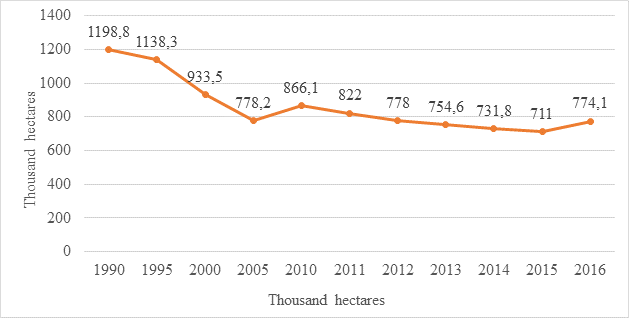
Figure 5 - Sown area of agricultural crops in the Republic of Crimea
2.5. Optimization of adaptive placement of varieties
Scientists of the Nikitsky Botanical Garden have identified climatically permissible minimum air temperatures of the winter-spring period for adaptive fruit crops in the steppe and foothill Crimea. The graph shows the air temperature, precipitation and GTC of the Selyaninov warm season according to decadal agrometeorological bulletins (Figure 6) .
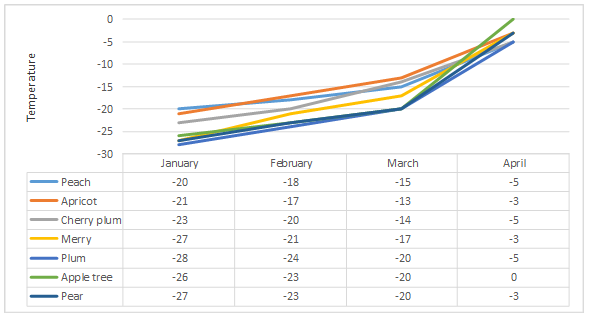
Figure 6 - Absolute minimum air temperatures of winter-spring time allowed for fruit crops in the steppe and foothill Crimea
Table 7 - The need for planting material in the Republic of Crimea for 2015-2025
Indicators | Years | Total, hectares | ||||
Planting by year, hectares | 2015 | 2016 | 2017-2018 | 2019 | 2020-2025 | |
500 | 500 | 1200 | 700 | 6000 | 8900 | |
Planting annually, hectares | 500 | 500 | 600 | 700 | 1000 | 3300 |
Many years of experimental material allowed us to establish absolute minimum air temperatures acceptable for the generative sphere of fruit crops on average for the decades of January, February, March and April. Also, based on the application of methods of adaptive technology for growing fruit crops, zones of optimal planting and yield for fruit crops have been determined:
1. For apple and pear trees, the most favorable areas are: Bakhchisarai, Simferopol, Belogorsky, Razdolnensky, Pervomaisky, Krasnogvardeysky, Nizhnegorsky, Sovetsky, Dzhankoy, Krasnoperekopsky;
2. For quince – Simferopol, Belogorsky, Nizhnegorsky, Soviet.
3. Peach – Bakhchisarai, Saki, Black Sea, Krasnoperekopsky, Dzhankoy, Kirov.
4. Cherries – Razdolnensky, Pervomaisky, Krasnogvardeysky.
5. Apricots – Saki, Black Sea, Krasnoperekopsky, Dzhankoysky, Kirovsky.
6. Cherry plums and plums – Razdolnensky, Pervomaisky, Krasnogvardeysky.
7. Almonds – Saki, Black Sea, Krasnoperekopsky, Dzhankoysky, Kirovsky.
8. Walnut – Simferopol, Krasnoperekopsky, Nizhnegorsky, Kirovsky.
9. Hazelnuts – Simferopol, Bakhchisarai.
10. Zizifusa – Krasnoperekopsky, Kirovsky; persimmons – Saki, Black Sea.
The use of methods of adaptive technology for growing fruit crops allows us to assess losses in the planted material and in the future, with the observance of agricultural cultivation techniques, to evaluate yield indicators. In this regard, it can be concluded that the development of adaptive technology is an actual scientific and practical direction of agricultural development and financing of this direction will bring economic benefits.
3. Conclusion
To contribute to the restoration and development of horticulture in the Republic of Crimea, the following steps should be taken:
1. In the course of research and experiments to improve the structure of seedlings;
2. In order to ensure stable fruiting, it is necessary to identify adaptationally optimal varieties of fruit crops;
3. It is necessary to create a biotechnological complex, including nurseries of planting material;
4. It is necessary to lay intensive gardens, taking into account the characteristics of the soils and the climate of the areas;
5. It is necessary to ensure such soil and climatic conditions, as a result of which optimal cultivation of varieties will follow;
6. Due to agrotechnical methods, it is necessary to maintain yield stability and high quality of fruits annually;
7. It is necessary to finance public and private programs for the development and implementation of new adaptive agricultural technologies, which will be aimed at identifying the full potential of varieties, reliable plant protection, preservation and improvement of soil fertility.
The regional development strategy of Crimea assumes an increase in investments. This will contribute not only to the revival of lagging agricultural sectors, but also to the raising of varieties already grown and products exported from them, which will give economic profit to the region.
